Blog & Latest Updates
Fly Fishing Articles
Insects by Common Name


Animal Phylum Arthropoda (Arthropods)
Taxonomic Navigation -?-
Kingdom
Animalia (Animals)
» Phylum Arthropoda (Arthropods)
| Class in Arthropoda | ||
| ArachnidaMites and Spiders | 0 | 1 |
| CollembolaSpringtails | 0 | 0 |
| Crustacea-MalacostracaCrayfish, Scuds, and Sowbugs | 0 | 10 |
| Crustacea-Maxillopoda | 0 | 0 |
| InsectaInsects | 0 | 114 |
Common Name
| Match | Common Name |
| Arthropods |
This is page 2 of underwater photos of Arthropoda. Visit the main Arthropoda page for:
- The behavior and habitat of Arthropoda.
- Studio pictures of 1244 Arthropoda specimens.
122 Underwater Pictures of Arthropods:
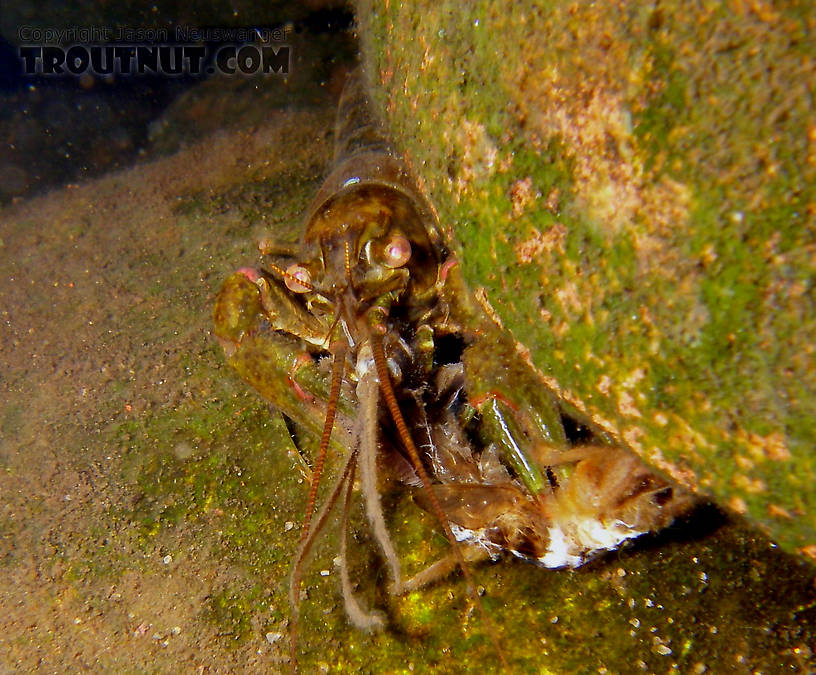
A crayfish chews on a Hexagenia limbata nymph shortly after a small Hex emergence. I didn't catch any fish, but playing around with my flashlight and camera in the rocks proved productive.
In this picture: Arthropod Order Decapoda (Crayfish) and Mayfly Species Hexagenia limbata (Hex).
In this picture: Arthropod Order Decapoda (Crayfish) and Mayfly Species Hexagenia limbata (Hex).
StateWisconsin
LocationNamekagon River
Date TakenJun 14, 2006
Date AddedJun 30, 2006
AuthorTroutnut
CameraPENTAX Optio WPi
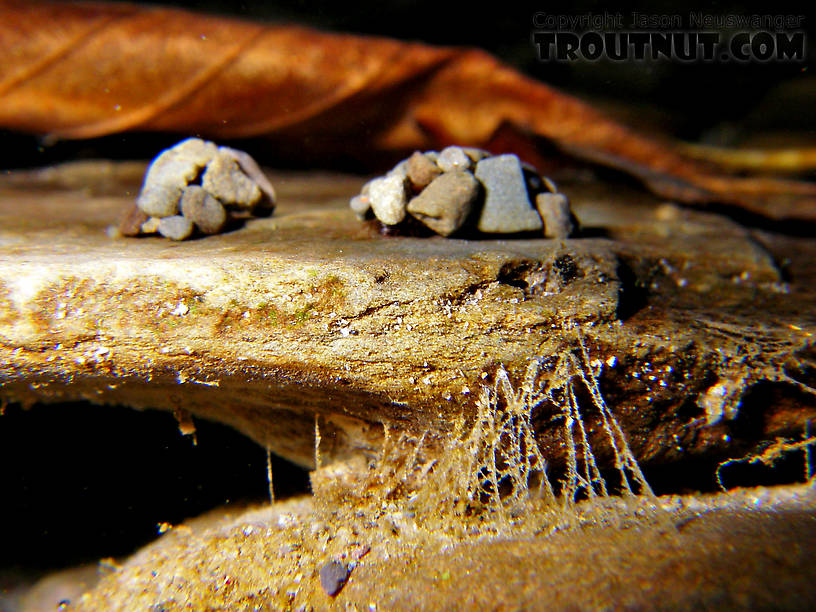
StateNew York
LocationEast Branch of Trout Brook
Date TakenSep 20, 2006
Date AddedOct 4, 2006
AuthorTroutnut
CameraPENTAX Optio WPi
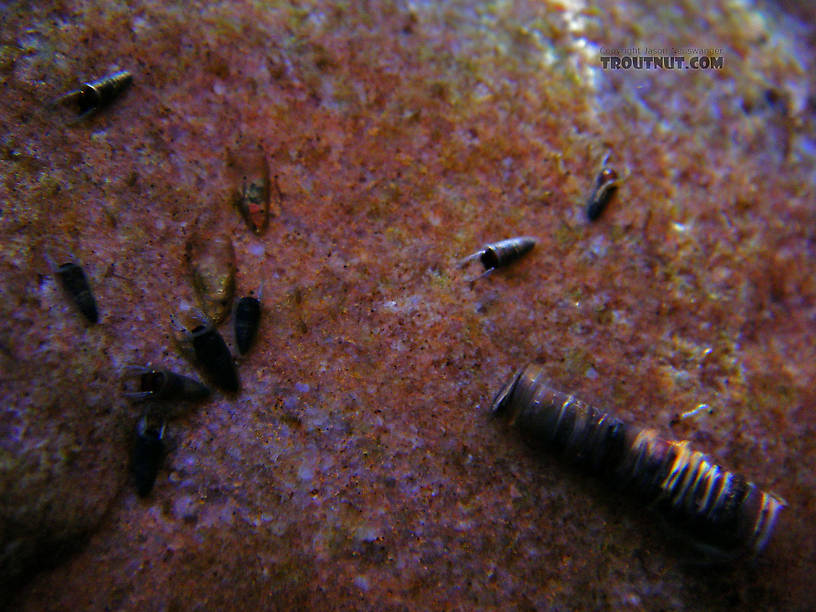
The large caddisfly case (really less than 1/2 inch) is a Brachycentridae larva. The other cases are actually the protective sheaths of black fly (Simuliidae) pupae. The two antler-like pieces sticking out of each one are not legs, but antennal sheaths.
In this picture: Caddisfly Family Brachycentridae (Apple Caddis and Grannoms) and True Fly Family Simuliidae (Black Flies).
In this picture: Caddisfly Family Brachycentridae (Apple Caddis and Grannoms) and True Fly Family Simuliidae (Black Flies).
StateWisconsin
LocationSpring Creek
Date TakenJun 22, 2006
Date AddedJul 1, 2006
AuthorTroutnut
CameraPENTAX Optio WPi
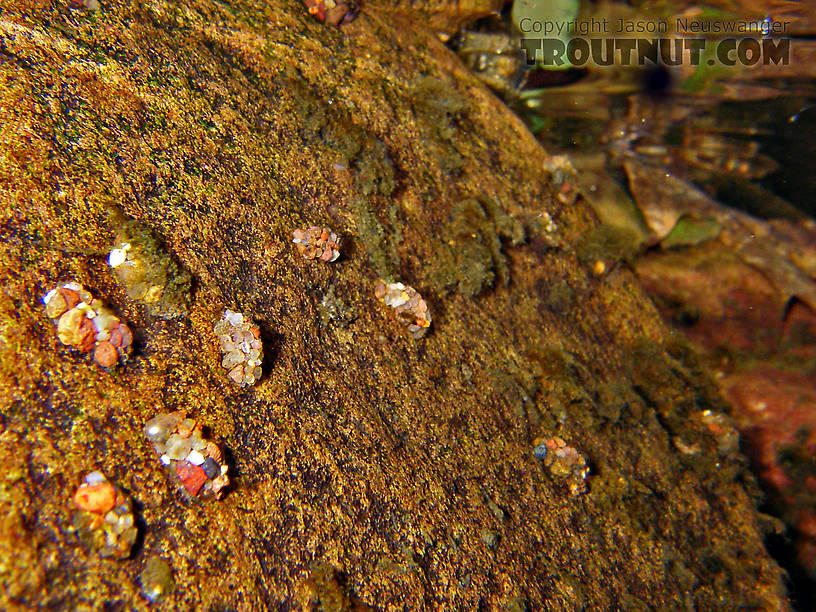
These are glossosomatids, Jason. They are probably Glossosoma nigrior, though it is possible that we are looking at mixed species. The ones to the right with their aggregate of similar sized grains are classic Glossosoma, while the ones to the left with the large anchor pebbles could possibly be Agapetus. Regardless, they're all commonly referred to as saddle case makers.
In this picture: Caddisfly Family Glossosomatidae (Saddle-case Makers).
In this picture: Caddisfly Family Glossosomatidae (Saddle-case Makers).
StateWisconsin
LocationSpring Creek
Date TakenJun 22, 2006
Date AddedJul 1, 2006
AuthorTroutnut
CameraPENTAX Optio WPi
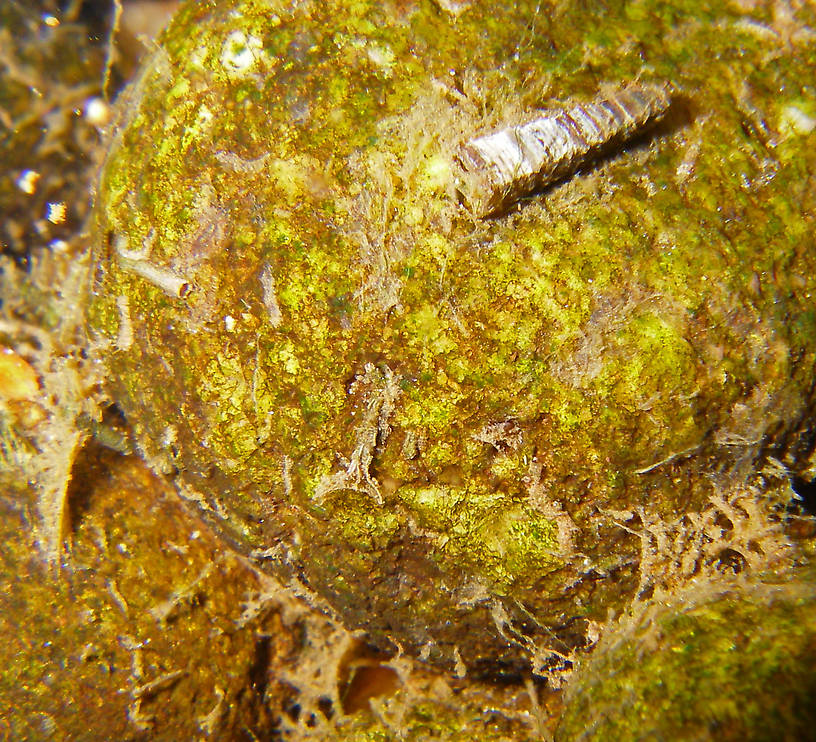
Despite the late date in the season, several caddisfly larvae remain on the rocks in this river.
In this picture: Insect Order Trichoptera (Caddisflies).
In this picture: Insect Order Trichoptera (Caddisflies).
StateNew York
LocationNeversink River
Date TakenSep 5, 2006
Date AddedOct 3, 2006
AuthorTroutnut
CameraPENTAX Optio WPi
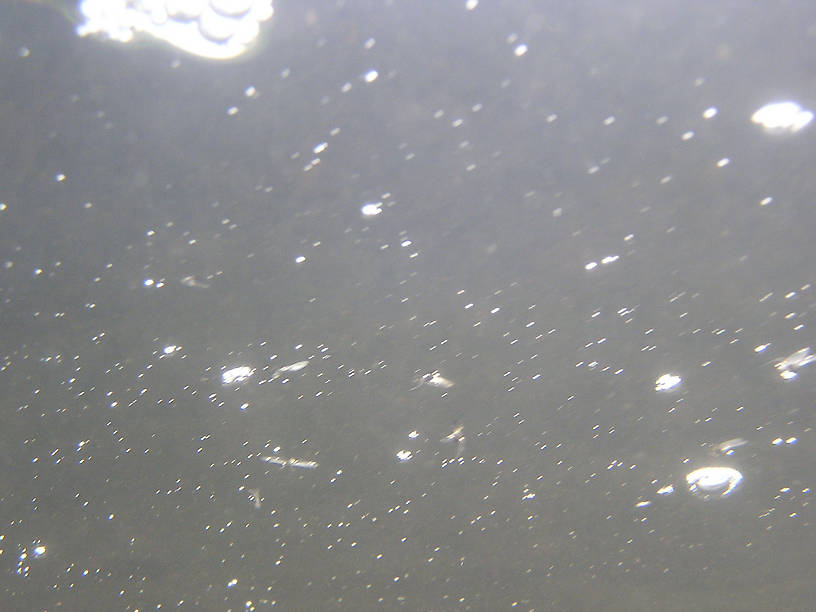
Here's the surface of the river viewed from below during a Tricorythodes spinner fall. Several dead spinners are visible.
In this picture: Mayfly Genus Tricorythodes (Tricos).
In this picture: Mayfly Genus Tricorythodes (Tricos).
StateWisconsin
LocationNamekagon River
Date TakenJul 18, 2004
Date AddedJan 25, 2006
AuthorTroutnut
CameraOlympus C740UZ
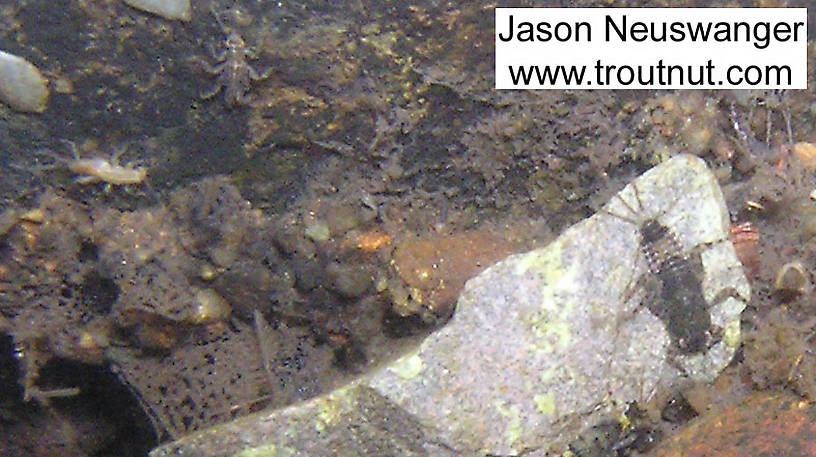
An Ephemerella subvaria nymph clings to a white rock in the foreground, and there are other nymphs in the background.
In this picture: Mayfly Species Ephemerella subvaria (Hendrickson) and Insect Order Trichoptera (Caddisflies).
In this picture: Mayfly Species Ephemerella subvaria (Hendrickson) and Insect Order Trichoptera (Caddisflies).
StateWisconsin
LocationNamekagon River
Date TakenMar 20, 2004
Date AddedJan 25, 2006
AuthorTroutnut
CameraOlympus C740UZ
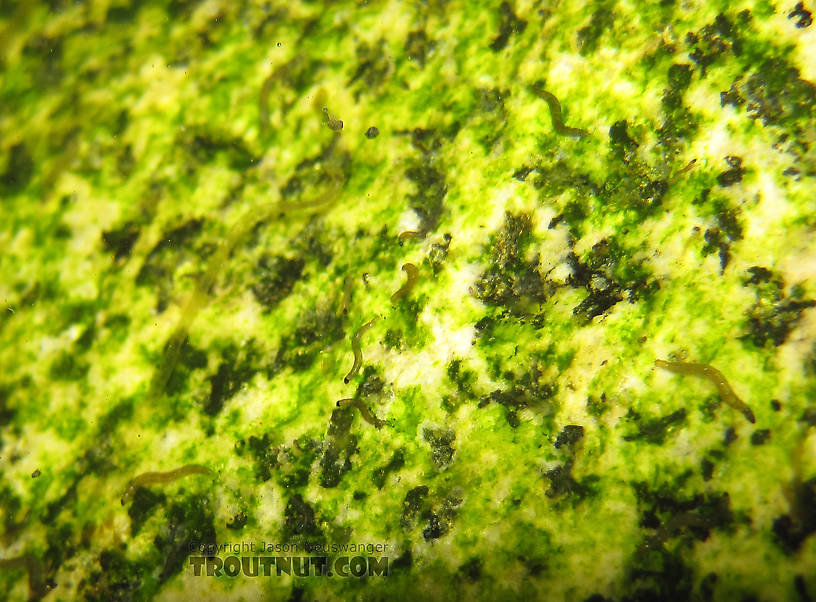
StateAlaska
LocationGulkana River
Date TakenJul 17, 2011
Date AddedJul 20, 2011
AuthorTroutnut
CameraCanon PowerShot D10
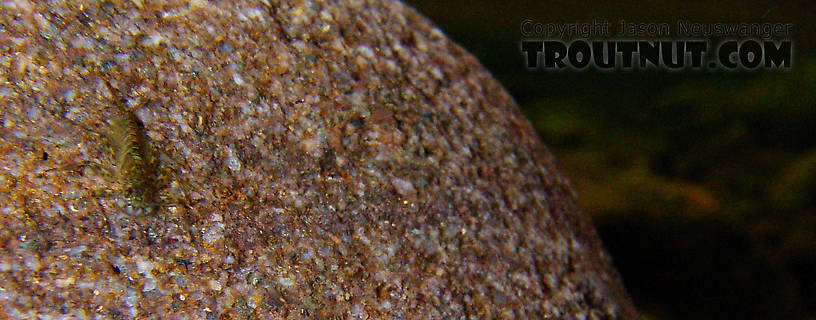
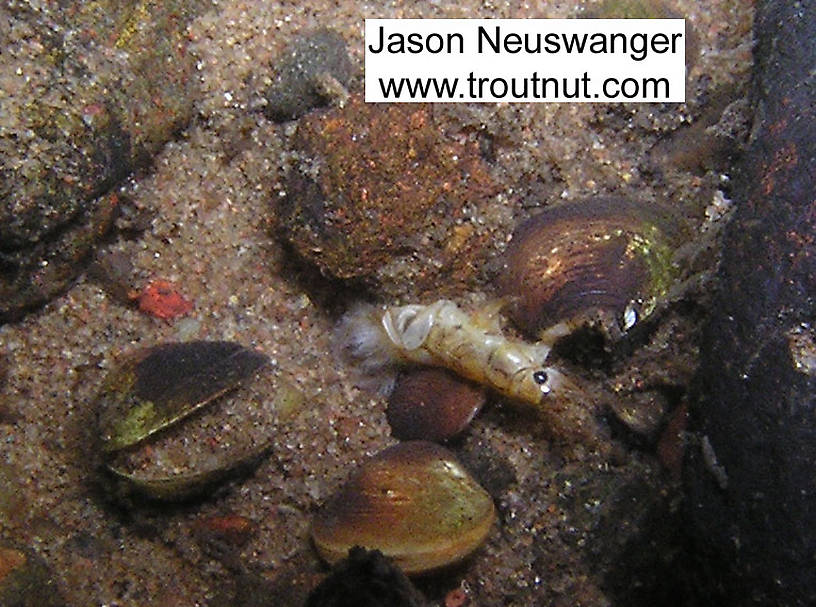
StateWisconsin
LocationNamekagon River
Date TakenApr 16, 2004
Date AddedJan 25, 2006
AuthorTroutnut
CameraOlympus C740UZ
Top 10 Fly Hatches
Top Gift Shop Designs
Eat mayflies.
Top Insect Specimens
Miscellaneous Sites
Troutnut.com is copyright © 2004-2024 Jason
Neuswanger (email Jason). See my FAQ for information about use of my images.
 privacy policy
privacy policy
